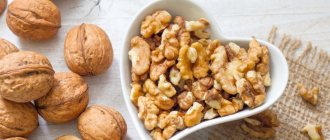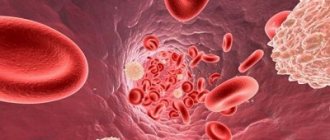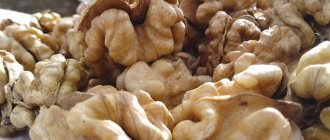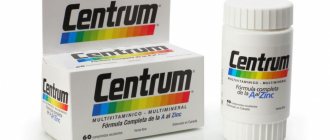Everyone has heard about the ability of nuts to have a beneficial effect on human health. But which nuts are the healthiest? After all, they all have different origins, properties and benefits for the body. The Forest Fairy blog invites you to find out which nut contains more calcium and which has more fiber; where more calories will be stored, and where – vitamins. In this article, you'll learn about the healthiest nuts to add to your diet and find a nutrient content chart (at the end) that you can keep for your notes.
Attention! All the beneficial properties that will be given below are valid only for unroasted and unsalted nuts. The exceptions are cashews, macadamia nuts and pistachios, which can be dry roasted without oil.
Healthy Nuts #1: Almonds
Almonds are a real champion among nuts in terms of calcium, protein and fiber . The first makes it an excellent choice for those who for some reason cannot consume dairy products, pregnant women, children and anyone who wants to provide their body with a sufficient amount of this bone-building element. Athletes love almonds for their high protein content (with a relatively low calorie content), and nutritionists love almonds for their insoluble fiber, because it helps cleanse the gastrointestinal tract.
But that is not all. Among all nuts, almonds contain the largest amount of vitamins PP (niacin, nicotinic acid), B2 (riboflavin, lactoflavin) and alpha tocopherol (a powerful antioxidant from vitamins E). Niacin reduces the level of total and bad LDL cholesterol in the blood, dilates small vessels and improves microcirculation. Riboflavin is needed for hair growth, improvement of the condition of nails and skin, and general health of the body, incl. thyroid gland. Alpha tocopherol protects our cells from oxidation, normalizes oxygen consumption, and directly affects the synthesis of important proteins, including collagen. Just 30 grams of almonds contain 36% of the daily value of vitamin E.
Tip: To get the most out of almonds, eat them with the skin intact, as this contains most of the benefits.
Types of almonds
There are currently three varieties of almonds grown:
— Bitter almonds (var. amara) contain the glycoside amygdalin (which gives the kernels a bitter taste and a characteristic “almond” smell), which when consumed easily decomposes into sugar, benzaldehyde and highly poisonous hydrogen cyanide. During the heat treatment, hydrogen cyanide compounds disappear.
In this regard, it is not recommended to consume bitter almonds without pre-treatment, especially to children. The lethal dose for a child is 10 nuts, for an adult – 50 nuts.
— Sweet almonds (var. dulcis) with a sweet seed and a small content of amygdalin. Its spiciness is much weaker.
— Brittle almonds (var. dulcis for. fragilis) with fruits that have a thin and fragile shell and sweet seeds.
According to nutritional properties, sweet and bitter almonds are distinguished.
Beneficial properties of cashew nuts
If you are a vegetarian, then cashews can be a very tasty and healthy addition to your diet. This nut will fill the body with a sufficient amount of protein and will become an important source of minerals (zinc, copper, iron, sodium) and pantothenic acid (vit. B5). More zinc can only be found in pine nuts. In addition, cashews contain a lot of magnesium (only Brazil nuts and almonds have more), which is necessary for protein synthesis, removing cholesterol from the body, maintaining the functioning of the nervous system, heart muscles and gall bladder.
Nuts in children's diets
Are nuts good for children? Pediatricians say yes. However, there are some contraindications:
- nuts are contraindicated for children under three years of age: due to their effect on the intestines, they can cause constipation and flatulence;
- if a child is prone to allergic reactions or suffers from bronchial asthma, before giving him the product, you should consult a doctor and conduct an allergy test;
- if a child is overweight, nuts in his diet should be limited due to their high calorie content;
- You should not give your child more than 50 grams of kernels at a time.
Small but very nutritious: pine nuts
Pine nuts are also one of the healthiest. Compared to their counterparts, you will find the largest number of elements such as:
- Zinc;
- Niacin or vitamin PP;
- Vitamin K - necessary for the synthesis of proteins that ensure sufficient blood clotting, healthy kidney function, metabolism in bones and connective tissue;
- Linoleic acid is an essential fatty acid from the class of Omega-6 unsaturated acids. Along with walnuts, cedar kernels are the main sources of polyunsaturated fatty acids, which must be in every person’s diet, because our body is not able to synthesize them on its own.
In addition, pine nuts contain a lot of magnesium, phosphorus, iron and choline. The latter is very important for the nervous system (especially improving memory), regulating insulin levels and fat metabolism in the liver. 30 grams of these nuts contain 11% of the daily value of vitamin E.
How to use it correctly
Nutritionists advise eating nuts unprocessed: after roasting, some of the beneficial substances are destroyed. They can be added to porridges, salads or cold soups, served with cheese as a cold snack: this will help make dishes more healthy and preserve the vitamins and microelements contained in the kernels. The exception to this rule is almonds. When fresh, it contains amygdalin, which in the body is converted into hydrocyanic acid, a substance toxic to the body. Therefore, almonds should be thoroughly roasted before use.
Soft varieties (macadamia, pecan) should not be eaten if they have acquired an unpleasant bitter odor. This indicates that the oils contained in the kernels have become rancid and will not bring any benefit to the body.
Are nuts good for weight loss? The answer is yes, but nutritionists give some recommendations regarding their use. It is advisable to eat the product in the morning or for lunch so that the carbohydrates contained in the nucleoli are completely converted into energy. Nuts are very high in calories, they can contribute to the formation of extra pounds if eaten before bed.
Why you should eat walnuts
As mentioned above, walnuts have the highest content of polyunsaturated fatty acids, including linoleic acid. These acids are indispensable for the cardiovascular system and blood circulation: they protect the heart, fight arrhythmia, and prevent the development of atherosclerosis.
In addition, walnuts are rich in iron, zinc, copper, manganese and folic acid. They contain quite a lot of antioxidants - these are gamma and delta tocopherols from the vitamin E group, which are extremely effective due to their ability to attach inside the cell membrane and give a sustainable result. Like alpha tocopherol contained in almonds, they protect the heart well, maintain youthful skin, and are useful in the fight against cancer.
Other amazing beneficial properties of these nuts include the ability to reduce inflammation in the body, the development of Alzheimer's disease and schizophrenia.
Top 8 most useful types
Below is a rating of the 8 most healthy types of nuts (based on evidence).
Almond
Almonds are high in vitamins B and E, calcium, phosphorus, magnesium and manganese. It is also rich in fats, but only 15% of them are absorbed in the lumen of the digestive system.
Almonds are also rich in antioxidants, the main ones of which are polyphenols and vitamin E.
Antioxidant substances not only prevent the appearance of cancer, but can also prevent the development of (, ,) coronary heart disease (CHD), Alzheimer's disease, and age-related decline in cognitive function (decreased memory, attention, thinking).
This composition determines the effectiveness of almonds (, ,) in relation to malignant degeneration of tissues of the following organs:
- prostate gland;
- mammary glands;
- colon;
- rectum.
In folk medicine, it can be used to lower plasma glucose levels and further control blood pressure.
According to research, almonds are especially effective in reducing cholesterol levels (including atherogenic fractions). It prevents the development of all diseases associated with atherosclerosis (myocardial infarction and stroke, chronic cerebral ischemia, coronary heart disease).
Almonds play a special role in dietetics. Through a variety of mechanisms, the nut helps reduce body weight and waist size.
With regular consumption of almonds, the intestinal microflora is also restored, the functioning of the stomach, pancreas and liver improves, bones are strengthened, arthrosis, osteoporosis and constipation are less common.
Almonds have powerful antioxidant activity and can rightfully be considered the healthiest type of nut in the world. It is also effective for weight loss and fighting atherosclerosis.
Pistachios
Pistachios are rich in dietary fiber and omega-3 fatty acids, B vitamins, manganese, copper and phosphorus. They are the lowest calorie (compared to other types) nuts.
Currently, many antioxidants have been found in pistachios that prevent the development of cancer and chronic diseases. A special role is given to lutein and zeaxanthin, which increase visual acuity and fight age-related macular degeneration (according to Spanish scientists).
Pistachios are recommended to be taken during periods of active physical activity, as they contain amino acids necessary for muscle tissue, as well as L-arginine, a substance that improves blood flow in the muscles. P
According to Indian scientists, adding pistachios to the diet (even in the absence of physical activity) in any case causes excess weight loss and a decrease in waist size.
Like all other nuts, pistachios reduce the risk of developing diseases of the heart and blood vessels, brain, endocrine and digestive systems.
Pistachios are especially effective in preventing ophthalmic diseases and improving athletic performance.
Walnuts
Walnuts are leaders in the content of omega-3 fatty acids and antioxidants (ellagic and phytic acids, catechin, melatonin).
These nuts have been used since ancient times for the treatment and prevention of “atherosclerotic” diseases and oncology.
Walnuts are highly effective (, , , ) in preventing the following types of cancer:
- prostate in men;
- mammary glands in women;
- large intestine;
- rectum;
- osteoarticular system.
Numerous studies by scientists from the USA, Spain and the Netherlands have revealed the ability of walnuts to improve the course of depressive disorders, prevent the development of dementia and cognitive impairment, and improve mood and emotional background in general.
Walnuts can be used to prevent cardiovascular diseases (hypertension, coronary heart disease) and diabetes, restore and maintain microflora balance.
They are also useful for men: they increase potency, improve sperm quality and increase the likelihood of conceiving a child.
Walnuts are high in omega-3 fatty acids and can be used to improve the health of almost every body system.
Cashew
Cashew nuts have a fairly balanced composition. They provide the human body with vitamins B, K and E, as well as phosphorus and iron, manganese and magnesium, selenium and zinc.
In addition, cashews are rich in antioxidants that prevent the appearance of malignant tumors and chronic diseases.
These nuts are effective in lowering blood pressure and fighting diseases, the development of which is caused by atherosclerotic lesions of the arterial bed.
Scientists from Chile and the USA emphasize the ability of nuts to prevent anemia and maintain the strength of musculoskeletal tissues.
Cashew consumption is associated with reduced body weight and a lower incidence of type 2 diabetes.
A special role is given to nuts because they have the ability to reduce the frequency of exacerbations of chronic cholecystitis, as well as the likelihood of the need for surgical intervention for this disease (according to employees of the Harvard School of Public Health).
Brazilian experts have identified the ability of cashews to protect the respiratory system from the effects of any external irritants (from common dust to tobacco smoke).
Cashews are essential for maintaining the health of the musculoskeletal system, as well as the respiratory, digestive, endocrine and cardiovascular systems.
Pecan
Pecans are famous for their abundance of antioxidants, copper and manganese. They are saturated with valuable fats and proteins with essential amino acids.
The fruits have a pronounced antioxidant and anti-inflammatory effect.
In folk medicine, they have been used for over 2,000 years to improve the course of diabetes mellitus types I and II, as well as diseases of the heart muscle.
American scientists emphasize the special role of pecans in reducing and maintaining body weight within standard limits.
Pecans are packed with nutrients and are widely used to treat metabolic diseases and reduce body weight.
Macadamia
Macadamia ranks first in the ranking of the most high-calorie plant foods.
The nut is rich in omega-3 fatty acids, vitamins (B1, PP), iron, phosphorus, manganese, copper and selenium.
A distinctive feature of macadamia is its high level of monounsaturated fats, which significantly reduce the likelihood of developing type II diabetes and cardiovascular disorders.
According to American experts, macadamia nuts are rich in antioxidants that have tropism for the cardiovascular and central nervous systems.
The specific effect of nuts is their complex effect on all parts of the metabolic syndrome. They reduce the volume of fatty tissue in the body, reduce insulin resistance, and normalize the secretion of endogenous insulin. As a result, deviations in the lipid profile, the metabolism of purine bases and carbohydrates, and blood pressure levels appear less often.
No less important is the role of macadamia in strengthening the immune system, increasing potency in men and preventing anemia.
Macadamia nuts have a strong antioxidant potential and can be used to prevent the development of metabolic syndrome.
Brazil nuts
Brazil nuts are rich in valuable fats, vitamin E, magnesium, copper and zinc.
However, the main advantage of this type of nut is the high level of selenium in its composition. 100 grams of Brazil nuts contain almost 35 daily requirements of this mineral.
Selenium is a powerful antioxidant. It prevents the emergence of malignant processes of any localization and the development of chronic diseases of the cardiovascular, endocrine, and central nervous systems.
However, selenium predominantly affects thyroid cells. Scientists from Poland and Portugal have found that low levels of the mineral in the diet significantly increase the risk of thyroid cancer, as well as autoimmune disorders (Graves' disease, Hashimoto's thyroiditis).
Experts from Greece note that the product also improves the course of autoimmune disorders. For example, the nut normalizes immunity and improves mood in people suffering from autoimmune thyroiditis.
Selenium significantly reduces the risk of developing neurodegenerative diseases, in particular Alzheimer's, Parkinson's and Pick's diseases.
Selenium is also important for the normal course of pregnancy (especially in the first trimester, when the formation of the neural tube in the fetus is observed) and the prevention of disorders of the central nervous system in a child in the first years of life.
Brazil nuts are leaders in the level of selenium in their composition. The mineral is extremely useful for maintaining thyroid health and fighting cancer.
Peanut
In fact, peanuts are a legume crop, but their organoleptic properties and compositional features allow them to be classified as nuts.
Peanuts provide the body with a large amount of valuable protein and dietary fiber, magnesium and vitamin E.
Large foreign studies note an increase in longevity and healthy life expectancy with the regular inclusion of nuts in the diet.
Peanuts reduce the incidence of diseases of the cardiovascular system and prevent the development of type II diabetes mellitus.
Peanut oil is widely used for cosmetic purposes. It improves the condition of skin and hair, removes fine wrinkles.
Peanuts are a valuable legume crop, similar in composition and beneficial properties to most known nuts.
Healthy Pecans
Quite little known in our area (but you can buy them in the supermarket or order online), healthy pecans are high in protein, fiber, zinc, manganese (in 30 grams - 60% of the daily value), thiamine, antioxidants - gamma tocopherols, as well as beta-carotene and beta-cryptoxanthin. The latter belong to carotenoids - these are natural immunostimulants that strengthen all the protective functions of the body as a whole.
Contraindications
Are nuts always good for you? They should be used with caution in case of cholecystitis and pancreatitis: this product is a “heavy” food that can provoke an exacerbation.
You should not eat nuts if you have a stomach ulcer (especially during an exacerbation), colitis, or diseases of the duodenum.
Almonds affect the myocardium, increasing the heart rate, so you should not eat them if you have tachycardia or hypertensive heart disease. Unripe almonds contain large amounts of cyanide and their consumption without reasonable restrictions can cause serious poisoning.
Hazelnuts are not recommended to be included in the diet of people suffering from type 1 and type 2 diabetes. If you have diabetes, you should treat nuts with caution and before you start eating them, it is recommended to consult your doctor.
Brazil nuts: benefits and harm to the body
People who have problems with thyroid function should take a close look at Brazil nuts. It is a good source of the mineral selenium: you will find 100% of the daily value in just 3.6 grams. these nuts. In addition to the production of thyroid hormones, selenium is also important for:
- Metabolism, fats, proteins and carbohydrates in the human body;
- Protecting the body from oxidants and radicals;
- Metabolism of nucleic acids, lipids, hormones;
- Strengthening muscle tissue and myocardium;
- Better absorption of vitamin E and iodine.
In addition to selenium, Brazil nuts contain a lot of calcium, magnesium (in 30 grams - 25% of the daily value), phosphorus (20% of the daily value), potassium, zinc, copper, thiamine, vitamin E (8% of the daily value) and a little antioxidants. At the same time, it should be consumed with caution due to increased levels of saturated fat, which increases the risk of cardiovascular disease.
History of the origin of almonds
Almond (lat. Prunus dulcis) is a shrub or small tree from the subgenus Almond (Amygdalus) of the Plum genus. Almonds are commonly called a nut, but it is more correct to call them the seed of an almond kernel, which is extracted from the fruit of a green shrubby plant.
Almond is a branched shrub (tree) up to 6 meters high. Its fruits are light brown and velvety seeds up to 3.5 centimeters in length and weighing up to 5 grams, covered with small dimples and grooves. Almonds grow on rocky slopes at an altitude of 800-1600 m above sea level (Bukhara almond reaches 2500 m), on calcium-rich soils. Light-loving, drought-resistant thanks to a well-developed root system. The fruits ripen in June-July. Fruiting begins at 4-5 years and lasts 30-50 years. Almonds are up to 130 years old.
The homeland of almonds is considered to be the territory of modern Turkey; from there it came to Europe and then to America. Mention of almond cultivation dates back to early BC. The almond blossom period was considered a symbol of the beginning of the new year. Almonds were used in embalming the dead: traces of almond oil were found in the tomb of the Egyptian king Tutankhamun.
Today, the most extensive plantations of almond trees are located in the USA (California), China, Syria, Iran, Morocco, Italy, Spain, Portugal, and the Mediterranean region. In Europe, almonds are grown in the warm regions of Slovakia and the Czech Republic, in the vicinity of Litomerice.
The climatic conditions of Russia are unfavorable for the ripening of nuts, so our country imports almonds from these countries. In the republics of the former Soviet Union, almonds are mainly grown in Tajikistan. The city of Kanibadam is rightfully considered the city of blooming almonds.
Transport costs and customs duties, the high nutritional value of almonds for the human body determined the high price of the product.
As tasty as it is healthy – hazelnuts
This nut is a good source of folic acid (more than all other nuts), which is essential for children and pregnant women to create and maintain the development of new cells. Hazelnuts also help provide the body with healthy fats (monounsaturated fatty acids), calcium, iron, magnesium, copper, manganese, thiamine, vitamin B6, the antioxidant alpha tocopherol, lutein and zeaxanthin. Lutein and zeaxanthin are carotenoids that improve immunity and are especially good at protecting vision.
Rules for selection and storage
You should choose nuts based on the following principles:
- It is worth checking the expiration date of the product. Expired kernels contain few substances valuable to the body, and fats can go rancid, causing the nuts to acquire an unpleasant aftertaste;
- the kernels should not have any foreign odor;
- the walnut should be shaken - there should be no rattling sound;
- soft varieties (pecans, macadamia) must be packaged in vacuum packaging;
- The packaging must be marked with the production date and expiration date. If they are missing, it is better not to make a purchase: it is possible that the product is expired and unusable. In this case, the benefits of nuts will be minimal;
- There should be no stains or cracks on the shell.
Nuts, the benefits and harms of which are described in the article, should be stored in an airtight container in a cool, dry place. Soft varieties can be kept in the refrigerator or freezer (this will extend the shelf life, but will destroy some of the nutrients).
Now you know if nuts are healthy. The well-known phrase “in small quantities is medicine, in excess is poison” can rightfully be applied to this product. 30-50 grams of kernels per day is the key to a long, healthy life!
Health benefits of macadamia nuts
When they say that macadamia nuts are the fattest, they often forget to add that most of these fats are healthy for the body. Monounsaturated fatty acids in macadamia nuts improve metabolism, prevent high cholesterol, and protect the heart and blood vessels. You can safely consume them, given their decent levels of fiber, calcium, potassium, magnesium and iron.
Among all the healthy nuts, macadamia also stands out for the record amount of thiamine in its composition (in 30 grams - 16% of the daily value). This substance is extremely important for the growth and development of the human body, maintaining the functioning of the heart, nervous and digestive systems.
Benefits for men
Are nuts good for men? Doctors say that they have the following effects on the male body:
- some types (cashews, almonds) are a means of preventing prostatitis and prostate cancer;
- help strengthen bone tissue and accelerate recovery from fractures and injuries;
- help to recover after physical activity. The product is especially useful for men who engage in strength sports: athletes who eat nuts note that they increase muscle mass more easily;
- improve sperm quality and enhance libido. This property of nuts is widely used in the treatment of male infertility.
What benefits will pistachios bring to the body?
Last on our list, but not in terms of health benefits, pistachio nuts contain almost everything you need: healthy fats, fiber, calcium, iron, magnesium, phosphorus, potassium, copper, manganese, thiamine, folic acid, choline and vitamin B6.
What you should pay special attention to is the high level of vitamin A in pistachios, which is practically not found in other nuts or is found in small quantities. Vitamin A is very important for antioxidant protection of the body and vision. The benefits of pistachio nuts for these purposes are emphasized by the content of the antioxidant gamma tocopherol, the above-mentioned lutein and zeaxanthin, as well as the natural immunostimulant beta-carotene. It’s worth treating yourself to unsalted pistachios more often!
Benefits for women
The beneficial properties of nuts for women are as follows:
- help prevent anemia, which often develops during pregnancy;
- improve the functioning of the reproductive system, promoting conception and normal fetal formation;
- are a strong means of preventing osteoporosis, helping to strengthen bone tissue;
- consumption of the product during lactation helps to increase the volume of milk and increase its nutritional value. It is especially useful during breastfeeding: almonds, which are considered a “woman’s nut”;
- During pregnancy, nuts can compensate for folic acid deficiency, which is especially important in the first trimester, when the neural tube is forming in the fetus. You can find out whether nuts are beneficial during pregnancy from your doctor: a woman may have individual contraindications;
- slow down the aging process thanks to antioxidant properties, and also improve the quality of hair and nails. Oils from the kernels can be used externally, adding to masks or creams to achieve better results.
Healthy nuts: table for comparing properties, vitamins and minerals
Perhaps after reading this article, you are a little confused about which nuts can be more beneficial for your body? Then our table will help you figure it out, which shows all the beneficial properties of the above nuts.
The numbers in the columns are based on 28 grams of nuts. In parentheses (%) is the percentage of the daily intake for the average person. Note the cells highlighted in red: these substances should be used with caution.
Source of numbers - American Nutrient Database for Standard Reference.
Harmful properties
Now you know if nuts are healthy. However, this product can bring more than just benefits to the body. The harm of nuts may be due to the following. They contain a lot of protein and cause an allergic reaction in many people. Allergies are manifested by the following symptoms:
- nausea and vomiting;
- bowel dysfunction (diarrhea);
- cough, sneezing, nasal congestion;
- lacrimation;
- the appearance of a rash on the skin;
- difficulty breathing.
One type of allergy is angioedema, which requires emergency medical attention.
People prone to allergies should consume nuts with caution, starting with half a kernel per day and carefully monitoring the body's reaction. It is important to remember that nuts cause cross-allergy, that is, if there is a reaction to one type, there is a high probability that it will also appear to another.
Eating too much of the product (more than 50 grams per day) without physical activity can cause obesity. 100 g of this product contains up to 500 kilocalories. When introducing nuts into your diet, you should reduce the amount of fat-containing foods and carefully monitor the total calorie content. Only a professional nutritionist can decide whether nuts are beneficial for a particular obese patient!
The kernels contain fiber, which in small quantities improves peristalsis, and in excess causes constipation and flatulence (increased gas formation).
If you eat a large amount of the product, symptoms such as headache, nausea and epigastric pain occur. In this case, you should immediately rinse your stomach and drink activated charcoal. If signs of poisoning do not go away, you should consult a doctor.
Nuts during pregnancy
Nuts are beneficial during pregnancy. The nutrients included in the product improve the well-being of the expectant mother and have a beneficial effect on the development of the fetus.
However, during the period of bearing a child, you need to consume nuts in doses - no more than 30 grams per day.
Before eating nuts, consult your doctor and make sure you are not allergic.
When breastfeeding
Nuts are not prohibited during lactation. However, you should avoid using them if an allergy to the fruits occurred during pregnancy, or if the baby developed diathesis after breastfeeding.
During breastfeeding, eat walnuts, almonds, hazelnuts, and cashews. The high content of saturated and unsaturated acids makes milk more nutritious.
Before eating nuts during breastfeeding, consult your doctor.
Nut allergy
Nuts belong to the group of allergenic products. The most powerful allergens are peanuts, chestnuts, almonds, walnuts, and pine nuts. The allergy is manifested by itching, redness of the skin, burning and other symptoms, including anaphylactic shock. The allergic reaction intensifies when interacting with alcohol.
To treat allergies, internal and external medications are used. Medicines should be prescribed by a doctor after identifying the allergen.









